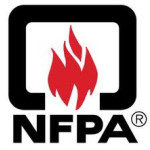- Industry: Fire safety
- Number of terms: 98780
- Number of blossaries: 0
- Company Profile:
Established in 1896, NFPA's mission is to reduce the worldwide burden of fire and other hazards on the quality of life by providing and advocating consensus codes and standards, research, training, and education.
Uncertainty in the predictions of a model due to uncertainties in the numerical values of the model parameters.
Industry:Fire safety
This rating is identified on an extinguisher by a number (e.g., 5, 20, 70), indicating relative effectiveness, followed by a letter (e.g., A, B, C, or D) indicating the class or classes of fires for which the extinguisher has been found to be effective.
Industry:Fire safety
Treatment of patients by emergency medical responders or medical first receivers including first aid, cardiopulmonary resuscitation, basic life support, advanced life support, and other medical procedures that occur prior to arrival at a medical care facility, or after arrival at a medical care facility.
Industry:Fire safety
To maintain a bed of finely divided solid particles in a mobile suspension by blowing air or gas through the bed at such a velocity that the particles separate and behave much like a fluid.
Industry:Fire safety
Those portions of the construction documents and calculations that are not submitted to the authority having jurisdiction with the application for permit, but which are to be submitted at a specified time after the application for permit.
Industry:Fire safety
Those personnel, equipment, and resources ordinarily dispatched upon notification of a structural fire.
Industry:Fire safety
Variable configurations or positions of the aerial device (e.g., elevation, extension) in which a manufacturer’s different rated load capacities are allowed.
Industry:Fire safety
With respect to the testing of a powered rescue tool, a test sequence performed with pauses or interruptions.
Industry:Fire safety
Wastewater derived principally from sources such as dwellings, commercial establishments, and institutions, that might or might not contain small amounts of groundwater, surface water, or storm water.
Industry:Fire safety
The use of two primary trunk facilities over separate routes or different methods to control one communications channel.
Industry:Fire safety
